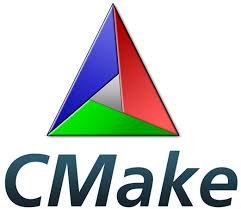How To Install CMake on openSUSE

In this tutorial, we will show you how to install CMake on openSUSE. CMake is an open-source, cross-platform family of tools designed to build, test, and package software. It controls the software compilation process using simple platform and compiler-independent configuration files and generates native makefiles and workspaces that can be used in the compiler environment of your choice
This article assumes you have at least basic knowledge of Linux, know how to use the shell, and most importantly, you host your site on your own VPS. The installation is quite simple and assumes you are running in the root account, if not you may need to add ‘sudo‘ to the commands to get root privileges. I will show you the step-by-step installation of CMake on openSUSE.
Prerequisites
- A server running one of the following operating systems: openSUSE.
- It’s recommended that you use a fresh OS install to prevent any potential issues.
- You will need access to the terminal to execute commands. openSUSE provides the Terminal application for this purpose. It can be found in your Applications menu.
- You’ll need an active internet connection to download CMake and its dependencies.
- You’ll need administrative (root) access or a user account with sudo privileges.
Install CMake on openSUSE
Step 1. Starting with an updated system is a best practice in the world of software installation. This ensures that all existing packages on your system are up-to-date, reducing the likelihood of encountering compatibility issues during the installation process. To update your openSUSE system, you can use the zypper package manager, which is the default package manager for openSUSE. Run the following commands in your terminal:
sudo zypper refresh sudo zypper update
Step 2. Installing Required Dependencies.
Before you can install CMake, there are certain dependencies that need to be installed on your system. These include gcc-c++ and make. The gcc-c++ package is a GNU project C and C++ compiler, while make is a build automation tool. You can install these dependencies using the zypper package manager with the following command:
sudo zypper install gcc-c++ make
Step 3. Installing CMake on openSUSE.
Next, download the latest version of CMake from the official website. You can use the wget command to download it:
wget https://github.com/Kitware/CMake/releases/download/v3.28.0/cmake-3.28.0.tar.gz
Remember to replace the URL with the link to the latest version available on the CMake website. The wget command is a free utility for non-interactive download of files from the web, supporting HTTP, HTTPS, and FTP protocols.
Once the download is complete, the next step is to extract the downloaded file. The file is in .tar.gz format, which is a compressed file format. You can use the tar command to extract the file:
tar -zxvf cmake-3.28.0.tar.gz
Navigate to the extracted directory and compile the source code:
cd cmake-3.28.0 ./bootstrap make
Then, install CMake with the following command:
sudo make install
After the installation process, it’s important to verify that CMake has been installed correctly. This can be done by checking the installed version of CMake with the following command:
cmake --version
If the installation is successful, this command will print the installed version of CMake.
Step 4. Troubleshooting.
If you encounter any issues during the installation process, here are a few tips that might help:
- Ensure that your system is up-to-date. An outdated system can cause compatibility issues.
- Make sure that all the necessary dependencies are installed. Missing dependencies can lead to installation failures.
- If the
wgetcommand fails, check your internet connection and ensure that the URL to the CMake file is correct. - If the
tarcommand fails, ensure that the file name and path are correct. - If the compilation or installation fails, check the error message. It often provides clues about what went wrong.
Congratulations! You have successfully installed CMake. Thanks for using this tutorial for installing CMake on your openSUSE system. For additional or useful information, we recommend you check the official CMake website.